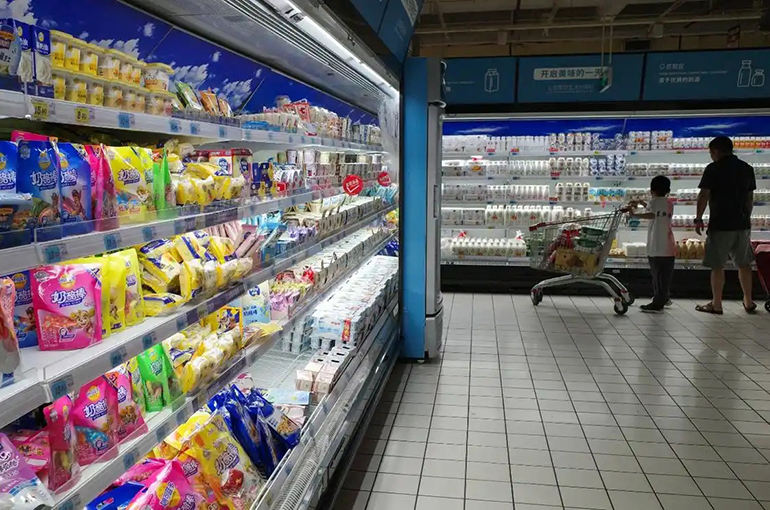 China's Cheese Market Picks Up Thanks to New Adjustment, Expert Says
China's Cheese Market Picks Up Thanks to New Adjustment, Expert Says(Yicai) June 23 -- Demand in China's cheese market has resumed growth after several years of deep industry adjustments, including new snack strategies and business-to-business expansion, according to the chief executive of Chinese dairy firm Milkground Food Tech.
China's cheese industry is shaking off the growth dilemma caused by price wars a few years ago and is beginning to regain momentum, Kuai Yulong said at a recent media briefing.
With the industry's market strategy shifting from excessive reliance on children to a product layout covering all ages, prioritizing the expansion of adult consumption scenarios, including work snacks, fitness supplements, and outdoor light meals, cheese sales have started to grow rapidly, Kuai noted. "Production lines are operating at full capacity," he pointed out.
Consumers in China lack daily cheese-eating habits, but the product's future growth potential was anticipated to be big, especially when growth in the traditional milk goods market reached a phased peak, Kuai said.
However, by focusing on low-threshold children's snack cheese sticks as the main entry point, price wars rapidly compressed manufacturers' profit margins, leading to major Chinese cheese brands reporting a significant decline or even a drop in revenue between 2022 and 2023, Kuai added.
In addition to growth being lifted by the increasing demand for cheese snacks in China, the fast development of Western-style catering and foods with cheese will also benefit the entire sector, according to Kuai.
The booming Chinese catering and baking industry is opening up new horizons for cheese in the B2B area, especially with the butter, cream, and cheese products of new tea drinks and new Chinese-style baking chains attracting new consumers, Kuai said.
The compound annual growth of cream, butter, and cheese products in China will top 7 percent, 11 percent, and 4 percent, respectively, between 2022 and 2027, according to data from Euromonitor. This has led many industry leaders, including Shanghai-based Milkground Food, to set up professional development teams for B2B.
The consumption of natural cheese in Japan surged 2.6 times and of processed cheese 1.7 times from the 1990s to 2022 amid local population aging trends, Kuai pointed out, adding that the prospects of China's cheese market can reference the same growth trajectory.
As domestic market demand rises, Chinese dairy companies are also exploring the natural cheese business layout to change the trend of over-reliance on imported raw materials, Kuai said. Milkground Food's natural cheese factory in northeast China is expected to start production next year, he noted.
The third phase of Yili Group's cheese plant in Inner Mongolia Autonomous Region, which went live this year, also includes natural cheese production, managers of the Chinese dairy firm previously said.
Chinese companies building natural cheese factories can better adapt to the cyclical fluctuations in the industry, Song Liang, an independent dairy analyst, told Yicai. For example, during periods of relative surplus in fresh milk or a downturn in the milk powder market, firms can use more fresh milk resources to produce high-value-added cheese with a longer shelf life, effectively alleviating cyclical supply surplus pressure, Song noted.
Editors: Tang Shihua, Martin Kadiev